Major Indoor Soccer League (1989-1990)
Major Soccer League (1990-1992)
National Professional Soccer League (1992-2001)
Major Indoor Soccer League (2001-2002)
Tombstone
Born: February 20, 1989 – MISL expansion franchise11989-90 Major Indoor Soccer League Official Guide
Re-Branded: August 2002 (Cleveland Force)
First Game: October 29, 1989 (L 6-3 @ Baltimore Blast)
Last Game: April 14 ,2002 (W 14-12 @ Harrisburg Heat)
MISL/MSL Championships: None
NPSL Champions: 1994, 1996 & 1999
Arenas
1989-1992: Richfield Coliseum (17,213)21989-90 Major Indoor Soccer League Official Guide
Opened: 1974
Demolished: 1999
1992-2002: CSU Convocation Center (12,500)31997-98 National Professional Soccer League Official Guide & Record Book
Opened: 1991
Marketing
Team Colors:
- 1989-90: PMS Yellow C, PMS Red 185 C & Black41989-90 Major Indoor Soccer League Official Guide
- 1997-98: Purple, Green & Yellow51997-98 National Professional Soccer League Official Guide & Record Book
- 1998-99: Red & Black
Radio:
- 1991-92 (MISL): WSLR (1350 AM)
- 1993-94 (NPSL): WHK (1420 AM)
Radio Broadcasters:
- 1991-92: Ed Vucinic
- 1993-94: Mark “Munch” Bishop & Paul Cox (play-by-play) & Kai Haaskivi (color)
Ownership
Owners:
- 1989-1992: George Hoffman & Stuart Lichter
- 1992-1999: George Hoffman
- 1999-2002: Richard Dietrich, Michael Gibbons & Paul Garofalo
Attendance
Tilting your mobile device may offer better viewing.
Sources:
- 2003-04 Dallas Sidekicks Media Guide (1989-1992 Crunch & MISL figures
- 1997-98 National Professional Soccer League Official Guide & Record Book (1992-1997 Crunch and NPSL figures)
FWIL FAVORITE
Cleveland Crunch Logo T-Shirt
The Crunch went through a few logo variations during their 13-season run. This is the design they ended with in 2002 and it’s virtually the same as the one they launched with in 1989. (In between there was a psychedelic digression in the late 1990’s where the team’s wordmark was contorted into the shape of a purple & yellow guitar.)
This design is also available as a crewneck or hooded sweatshirt or a 3/4 sleeve Raglan t-shirt from our partners at Old School Shirts!
When you make a purchase through an affiliate link like this one, Fun While It Lasted earns a commission at no additional cost to you. Thanks for your support!
Background
The Cleveland Crunch formed in early 1989 as an effort to revive indoor soccer in Cleveland, Ohio after a one-year hiatus. Cleveland was one of the hottest markets in the U.S. for indoor soccer during the sport’s boom years in the early-mid 1980’s. The Cleveland Force (1978-1988) of the Major Indoor Soccer League attracted huge crowds to the Richfield Coliseum in the Eighties, often outdrawing the NBA’s Cleveland Cavaliers, who shared the building during the winter. The Force even achieved indoor soccer’s elusive Holy Grail – they turned an annual operating profit on a couple of occasions. But by the end of the decade, Force owner Bert Wolstein grew pessimistic about the outlook for the faltering MISL. He folded his franchise in July 1988, despite the fact that the Force still drew strong crowds and were considered the league’s model franchise.
Akron stockbroker George Hoffman negotiated with Wolstein to buy and revive the Force, but ultimately failed to strike a deal. Instead, he approach the MISL and applied for an expansion franchise for Cleveland. The league awarded a new franchise to Hoffman and business partner Stuart Lichter in February 1989, seven months after the demise of the Force. After one winter without indoor soccer, the MISL returned to Cleveland in the fall of 1989. The new team would be called the Cleveland Crunch.
Force Nostalgia
Hoffman and Lichter made several moves to try to connect the Crunch to the popular legacy of the Force. Former Force GM Al Miller, who presided over the old club’s boom years from 1984 to 1987, returned in the same capacity with the Crunch. Kai Haaskivi, a popular former Force All-Star, was hired on as player-coach for the 1989-90 MISL season.
But the indoor soccer moment in Cleveland was over. The Crunch struggled on the floor with a last place 20-32 record under Haaskivi. The storyline at the box office was worse. Average attendance of 5,543 was worst in the eight-team MISL and less than half what the Force drew in their final season just two years earlier.
Karic & Marinaro
A lone bright spot during the Crunch’s inaugural season was the mid-season acquisition of Yugoslavian forward Zoran Karic in a trade with the San Diego Sockers. The trade set the table for the Crunch to dominate indoor soccer during the 1990’s, as Karic paired with Crunch forward Hector Marinaro to form the most formidable offensive duo in the sport for the next ten years.
Prior to Crunch’s second season in 1990-91, the MISL re-branded itself as the “Major Soccer League”, removing the word “Indoor”. The name change was subtle (and ignored by most fans and media), but portrayed a league with an identity crisis and a group of beleaguered owners losing faith in their core product. The Crunch continued to struggle as the season opened. Attendance dropped further, beneath 5,000 fans per game (the Crunch would finish last in the league again). Haaskivi was relieved of his coaching duties after a 9-18 start.
But under new coach Trevor Dawkins the Crunch caught fire in the season’s second half and made an improbable run to an MSL Championship Series date with the San Diego Sockers. The Sockers took the series in six games for their fourth straight league championship. Dawkins was named Coach of the Year for his turnaround effort while both Karic (2nd) and Marinaro (5th) finished among the top five scoring leaders in the league.
1992: New League, New Arena
The winter of 1991-92 proved to be the 14th and final season for the MSL. The Crunch failed to get back to the final, but attendance shot up 52% to over 7,000 per game at the Richfield Coliseum. When the MISL folded in July 1992, Crunch owner George Hoffman accepted an invitation to join the league’s former rival, the lower-budget National Professional Soccer League, for the 1992-93 season.
The terms for entry into the the NPSL were severe – the Crunch were only allowed to keep six players from their roster and NPSL rules limited teams to only two foreign players. That choice was easy – Marinaro (Canada) and Karic (Yugoslavia). With the move to the new league, the Crunch also abandoned the suburban Richfield Coliseum and moved downtown to the CSU Convocation Center.
NPSL Dynasty
The Crunch would enjoy their greatest success in the NPSL. Karic and Marinaro simply dominated the league. Marinaro won every NPSL scoring title from 1993 to 2001, with the exception of 1994 – when Karic won. Marinaro won six league MVP awards during the 1990’s and Karic added one of his own. Goalkeeper Otto Orf, who wore #00 (of course) was one of the league’s best goalkeepers. The Crunch won three league championships in the NPSL in 1994, 1996 and 1999.
The NPSL had radically different scoring rules than the MISL, including 2-point and 3-point goals. During the MISL years, final game scores often looked like high scoring ice hockey games – 4-3, 6-5, 8-6. Once the Crunch joined the NPSL, scoring lines looked more like American football results – 16-10, 24-17 and so on. In 1997, the Crunch set the all-time NPSL record for single game scoring, dropping 52 points on a terrible Columbus Invaders team. The modified scoring rules turned off some long-time indoor fans who grew up watching the MISL, but it didn’t seem to harm Crunch attendance too badly. The team never did approach the status enjoyed by the Force in the 1980’s, but attendance (announced, anyway) stayed in the 7,000 – 8,000 range for the rest of the 1990’s.
The Crunch’s fortunes began to decline at the turn of century, as the did the outlook for the sport of indoor soccer as a whole. After more than a decade of ownership and three championships, George Hoffman sold the Crunch in December 1999 for a reported $1.75 million. It was the highest sale price in the 15-year history of the NPSL. The new owners included Paul Garofolo, the former VP of Marketing for the Force during the 1980’s, and his financial backers, Richard Dietrich and Michael Gibbons.
Demise: Forced Nostalgia
The NPSL folded in the summer of 2001. Six former NPSL teams, including the Crunch, re-organized as the “new” Major Indoor Soccer League. Nostalgia was the rule of the day, as struggling indoor owners across the country rushed to reclaim brand identities from classic indoor teams of the 1980’s.
In 2002, Garofolo obtained the rights to the Cleveland Force name from the Wolstein family, with whom he had remained close. The Crunch was re-branded in August 2002 as the new Cleveland Force playing in the new Major Indoor Soccer League. But doubling down on nostalgia for the glory days of the 1980’s didn’t land with 21st century Ohioans. By 2003, the club was in serious budget cutting mode and in 2005, the franchise that began sixteen years earlier as the Crunch shut down for good.
Despite a good run in the 1990’s, the Crunch never replicated the popularity or influence of the original Cleveland Force. But they did actually manage to outlast them, playing 13 seasons to the Force’s ten.
Cleveland Crunch Shop
Our Favorite Stuff
MISL Logo T-Shirt
This classic era Major Indoor Soccer League logo shirt is available from the guys at Cincinnati’s Old School Shirts in a variety of great styles:
Crewneck or hooded sweatshirts
Long-sleeve tee
3/4 sleeve raglan
Women’s scoop neck
When you make a purchase through an affiliate link like this one, Fun While It Lasted earns a commission at no additional cost to you. Thanks for your support!
Cleveland Crunch Video
The Crunch beats the St. Louis Ambush in double OT to clinch the 1994 NPSL championship at the CSU Convocation Center:
Grainy action from the Crunch’s debut season in the Major Indoor Soccer League. December 1989:
Links
“Cleveland, City of Champions (at Least in Indoor Soccer of the 90’s)“, Andrew Keh, The New York Times, June 7, 2015
###

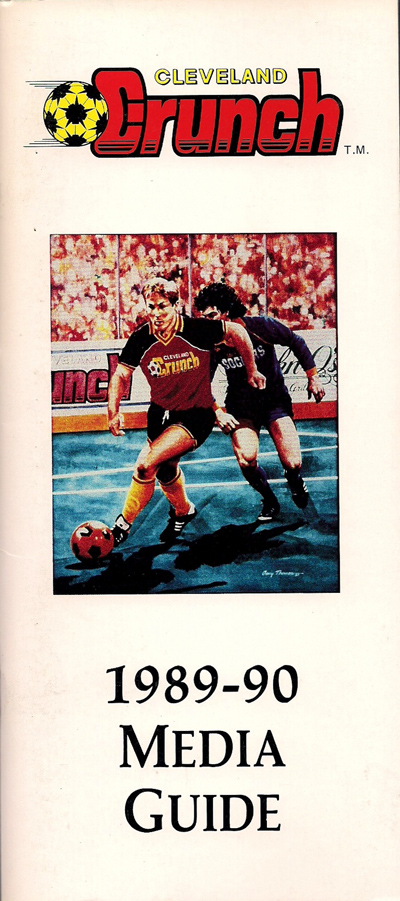

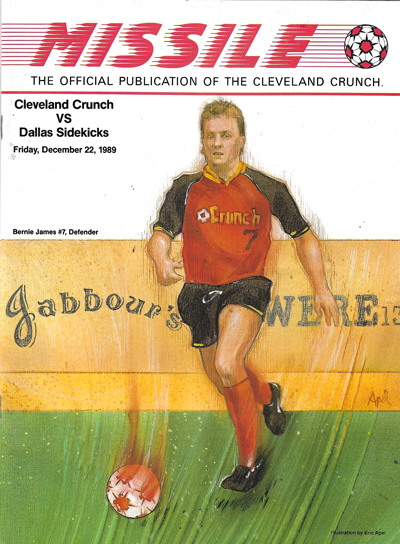
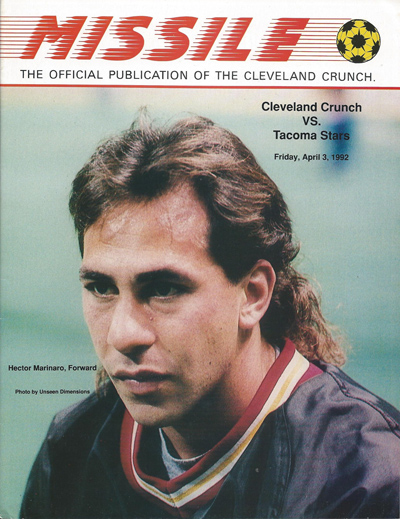
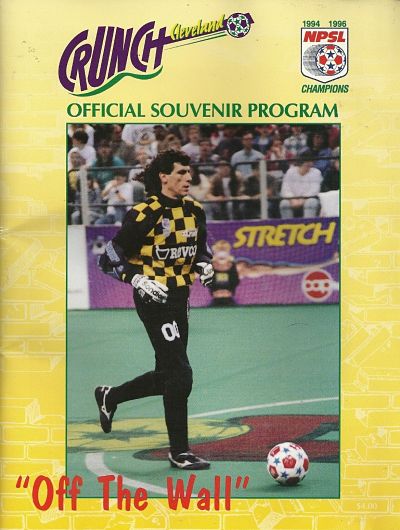
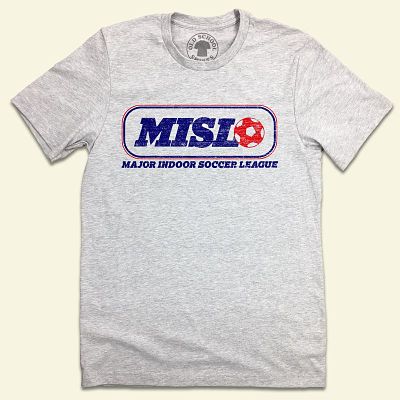
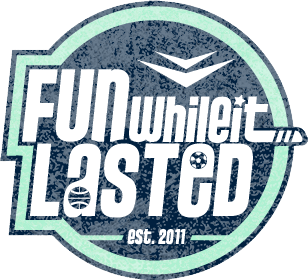
2 Responses
In just those two articles, Garofolo said so many simply false and outlandish things, it’s amazing.